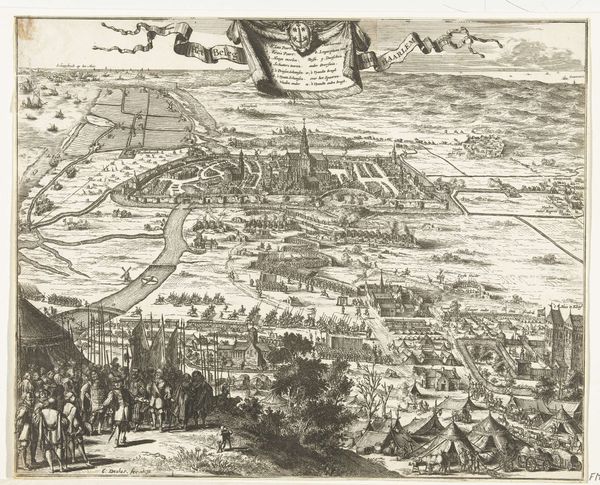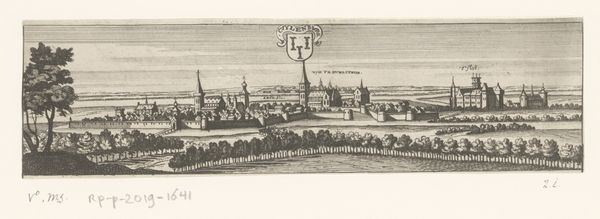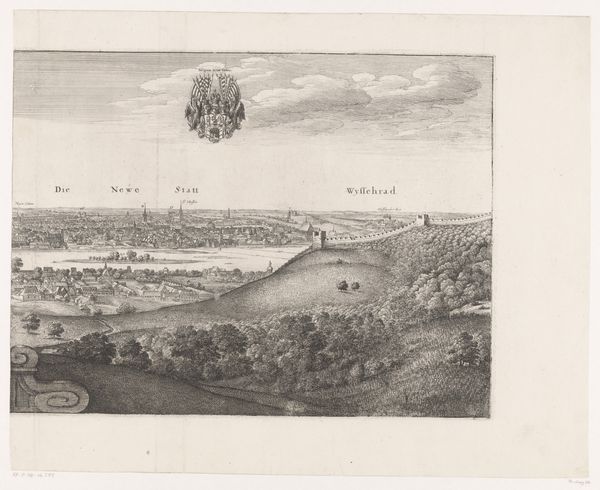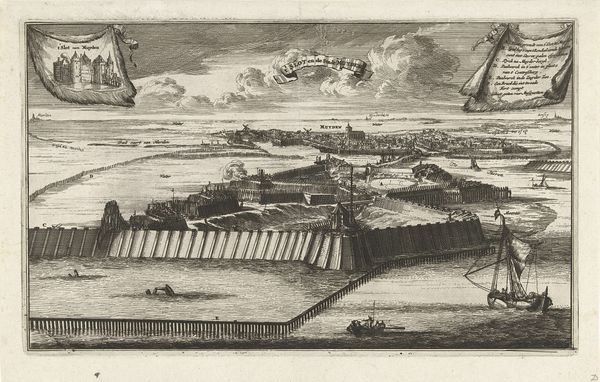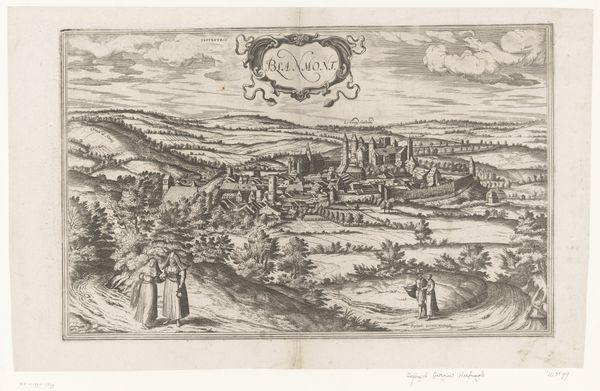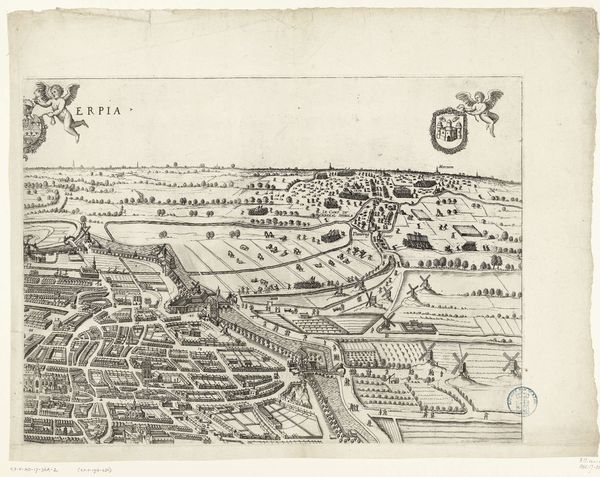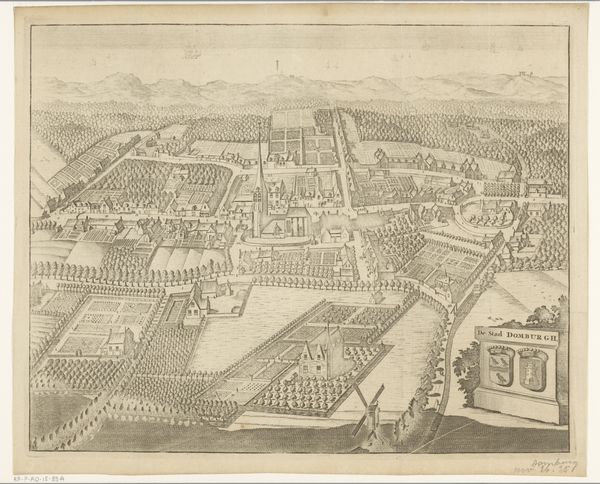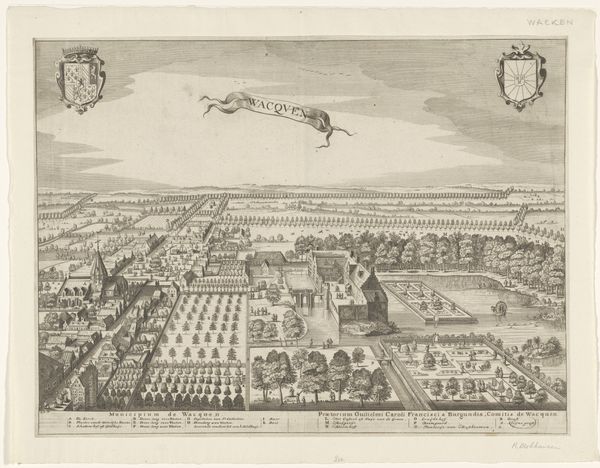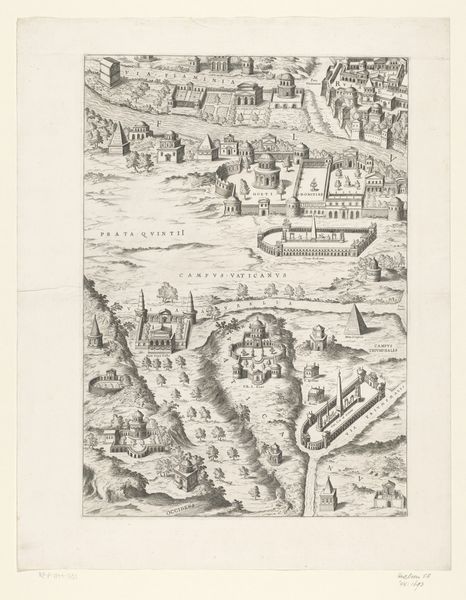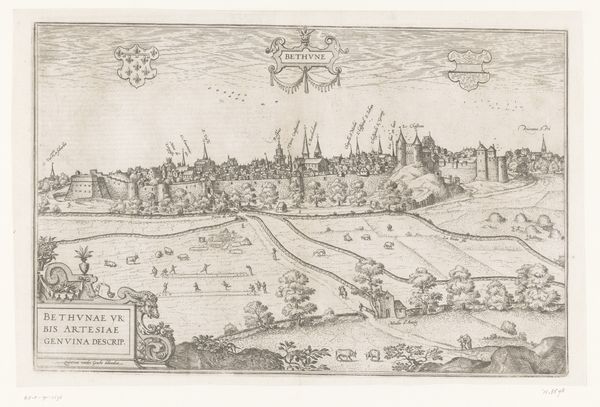
print, engraving
#
baroque
# print
#
old engraving style
#
landscape
#
perspective
#
line
#
cityscape
#
engraving
Dimensions: height 224 mm, width 489 mm
Copyright: Rijks Museum: Open Domain
Curator: I'm drawn to the feeling of quiet observation in this 18th-century print, titled "Gezicht op Verona." What are your initial thoughts? Editor: It feels a little bit like peering through a historical keyhole, doesn’t it? There’s a distance here, not cold, but contemplative. I get the sense of an artist documenting, meticulously showing rather than dramatically interpreting. It's almost cartographic in its approach. Curator: Yes, that’s a great way to put it. There's a precision in the lines, a dedication to detail that reminds us it’s an engraving. Given Verona’s rich history as a Roman city, the architectural accuracy almost gives it the feeling of a memorial to urban design through time. Editor: Absolutely. And notice the prominent banner that spells out VERONA, almost floating above the scene, regal yet strangely vulnerable, as if time could crumble those letters just as it does the stone buildings below. It’s like a visual mantra – declaring its name across the ages. Curator: Exactly, that's the visual statement the cityscape is trying to convey. What I also notice is the composition, almost as though you are standing above Verona and are looking down upon its citizens and city. Editor: The landscape itself, though, isn’t just backdrop, is it? The rolling hills, the hint of mountains… it gives Verona context. And then there’s the symbolism of the people included, with hints of everyday lives – merchants, travelers… small figures making big histories, adding life and symbolism within its borders. Curator: Yes, and let’s not forget how the lines used for engraving often imply symbolic weight to physical attributes such as depth or age. In a city like Verona, steeped in layers of history, from the Romans to the Scaligeri family, you see lives piled on top of each other, visually represented by each etched stroke and engraving mark. Editor: You're right. These engravings allow us a glimpse into how cities memorialize their legacy. Each tiny person within the print also reveals their unique role, symbolizing movement, life, and transformation. I see not only buildings, but human endeavor that connects everything together. Curator: Looking closely at it now, this feels to me as though, the "old engraving style," isn’t just aesthetic, but also reflects an era’s worldview: detailed, methodical, eager to categorize and remember a city—to capture not just a view but a truth about that moment of European history. Editor: Well, thanks to this little historical peep show, I see both the ambition and quiet fragility within it now.
Comments
No comments
Be the first to comment and join the conversation on the ultimate creative platform.

